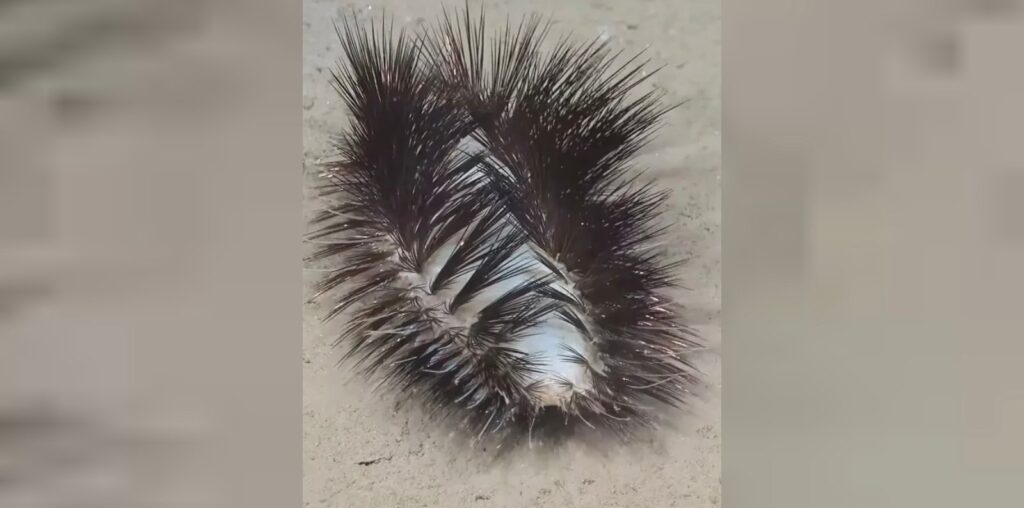![]()
An underwater robot captured footage of an astonishing bristled creature in the remote ocean.
Researchers at the Schmidt Ocean Institute filmed the alien-like creature while using a remotely-piloted underwater robot to scour the seabed in the Chile Margin — which is a submerged continental shelf extending from the west coast of Chile into the Pacific Ocean.
In the video, taken by the Schmidt Ocean Institute’s robotic explorer ROV SuBastian, the spectacular shimmery critter is seen slowly crawling across the ocean floor.
The footage of the peculiar animal has amassed over 5.4 million views on Instagram — with thousands of social media users comparing it to a “deep sea Christmas tree” and a “forbidden toilet scrubber.”
However, the creature is actually a polychaete, which means “many bristles”. A polychaete is a class of marine worms, more widely known as bristle worms.
According to the Schmidt Ocean Institute, each of the creature’s body segments sports a pair of fleshy appendages called parapodia that are forested with sparkling bristles called chaetae. While many worms are bioluminescent, this animal is iridescent due to special protein structures in its plumage.
“To describe this polychaete, one simply must use jazz hands — it is the only way to capture this deep-sea worm’s dazzle,” Schmidt Ocean Institute writes in the caption.
“Some worms are bioluminescent, but this sassy sparkler has protein structures in the bristles that make them iridescent.”
What are Polychaetes?
Found in nearly every corner of the deep, polychaete worms rule the sea, and play a vital role in the deep sea ecosystem. There are around 8,000 known species of these marine worms, which range in size from a few millimeters to around 10 feet in length.
The undersea animals are also multifaceted in their function and diet, from the heat-tolerant species that congregate at hydrothermal vents to the bone-eating worms that cycle nutrients.
According to Natural World Facts, A common feature is that many polychaete worms that inhabit the open ocean are transparent. This is because there is no concealment in the midwater zone, and so some worms like the green bomber worm have adapted to use bioluminescence as a way to startle and distract predators. When threatened, they explode their light-producing organs called photophores, dropping a kind of bioluminescent bomb.
While these creatures may look unusual, in certain areas of the South Pacific, certain species of polychaetes are commonly used as fishing bait and even human food in certain areas of the South Pacific.
Image credits: All photos by Schmidt Ocean Institute.

